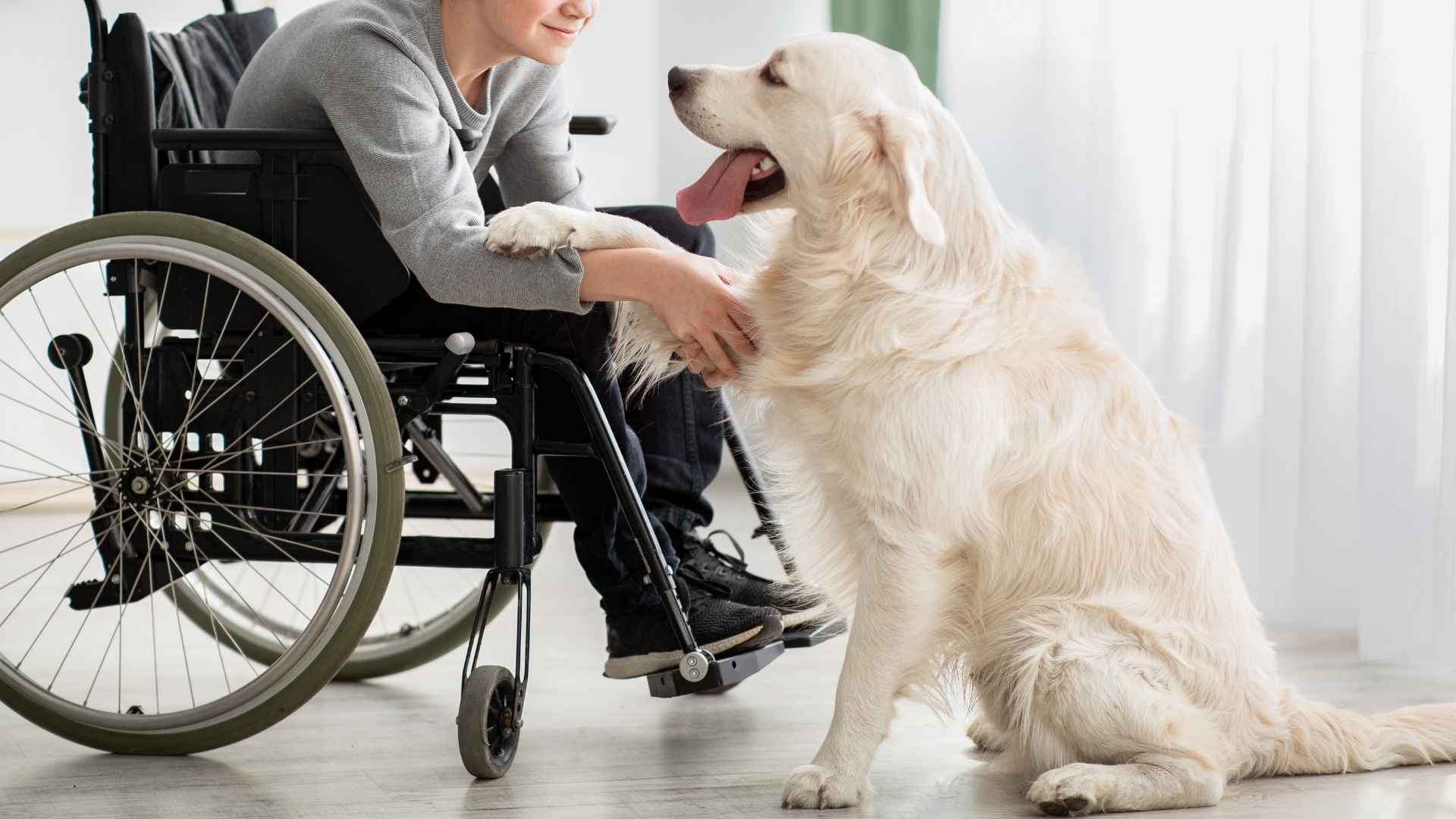You can’t see everything all the time—but a protective dog can. These breeds are different. They don’t overreact, but they’re never caught off guard. They’re wired to observe, to feel shifts in energy, and to step in when something isn’t right.
It’s not about size or loud barking. It’s about how they carry themselves—always alert, always ready. They’re the kind of dog that looks at a stranger and makes them think twice.
But they’re not just watchful—they’re incredibly loyal. They protect their people with quiet confidence. Whether you live alone, have a family, or just want to feel a little safer day-to-day, some breeds are simply built for the role.
Now, let’s look at the dogs that do more than love—they protect.
Protective Service Dog Breeds
1. Belgian Malinois
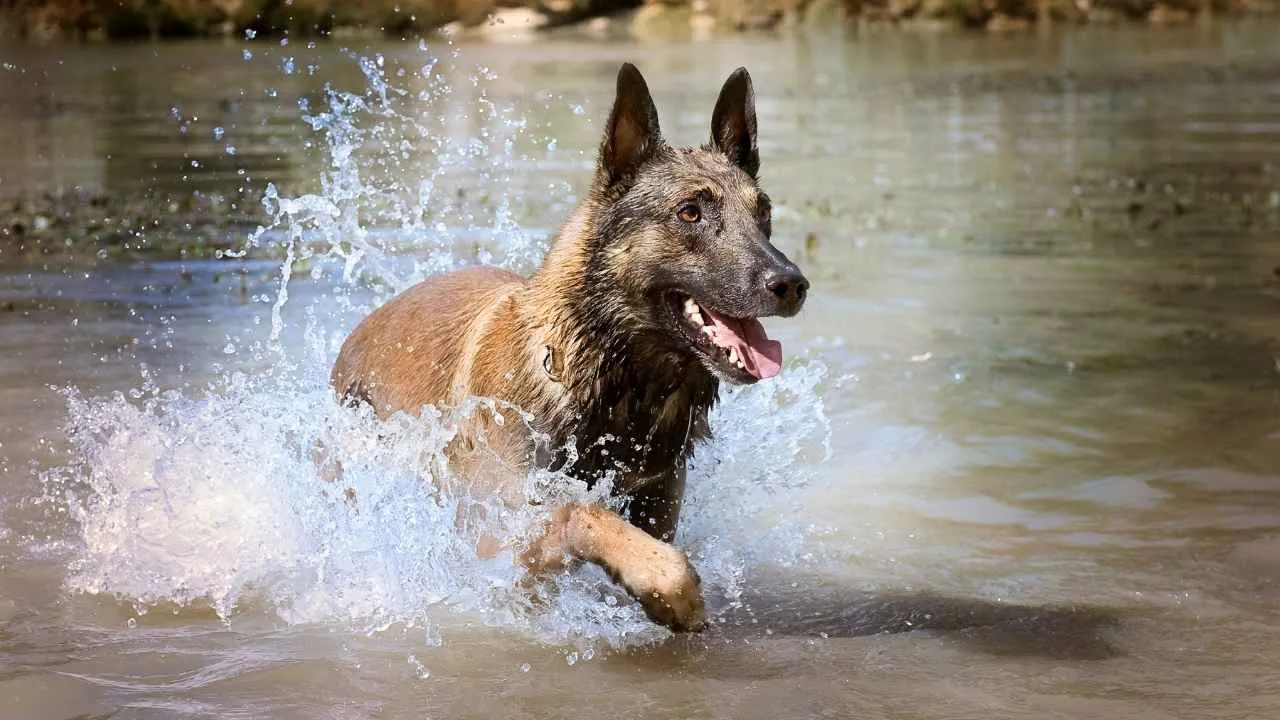
The Belgian Malinois isn’t a casual companion — it’s a purpose-driven working breed with an unmatched work ethic. Originally bred for herding, they now serve in military and police units worldwide thanks to their high energy, quick reflexes, and sharp decision-making instincts. This is a dog that doesn’t wait to be told twice.
Performance that demands commitment
While they’re widely respected as elite protection dog candidates, they’re not plug-and-play pets. Malinois need daily physical and mental stimulation — structured games, problem-solving, or endurance exercise, as PetMD stated. Without it, they’ll invent their own tasks, and those usually involve your furniture.
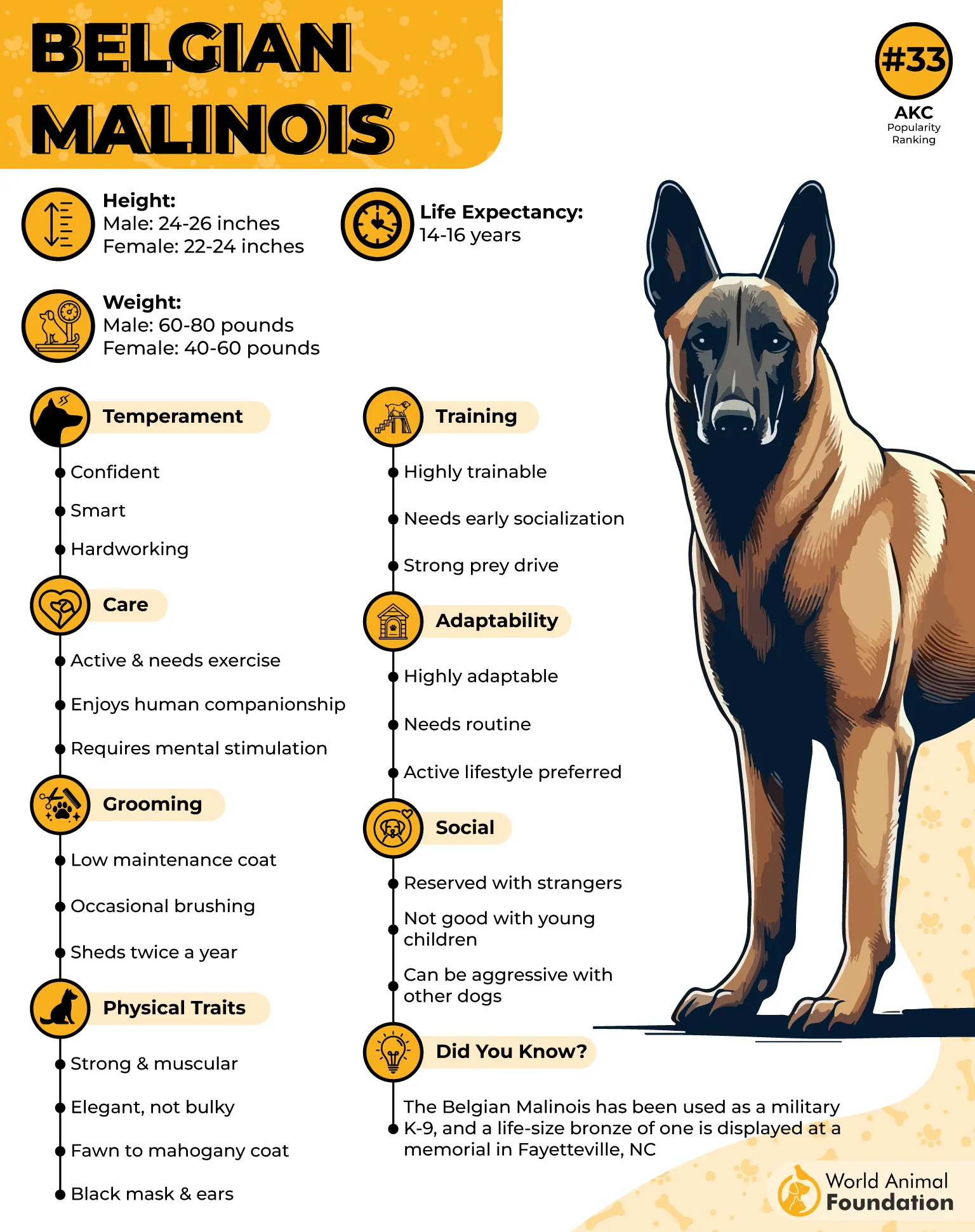
More than muscle — they bond deeply
This breed is loyal to the core and forms an intense attachment with its handler. With proper training, they can absolutely serve as a devoted family dog, but early socialization is non-negotiable. Their protective nature isn’t about random aggression — it’s about calculated awareness and strong instincts.
A serious dog for serious roles
Belgian Malinois aren’t just fast and focused — they’re incredibly responsive, making them top-tier guard dogs when managed correctly.
Their ability to assess threats and react under pressure is why they’re trusted in high-stakes roles. But make no mistake — without consistent leadership, they’ll take the lead themselves.
2. German Shepherds
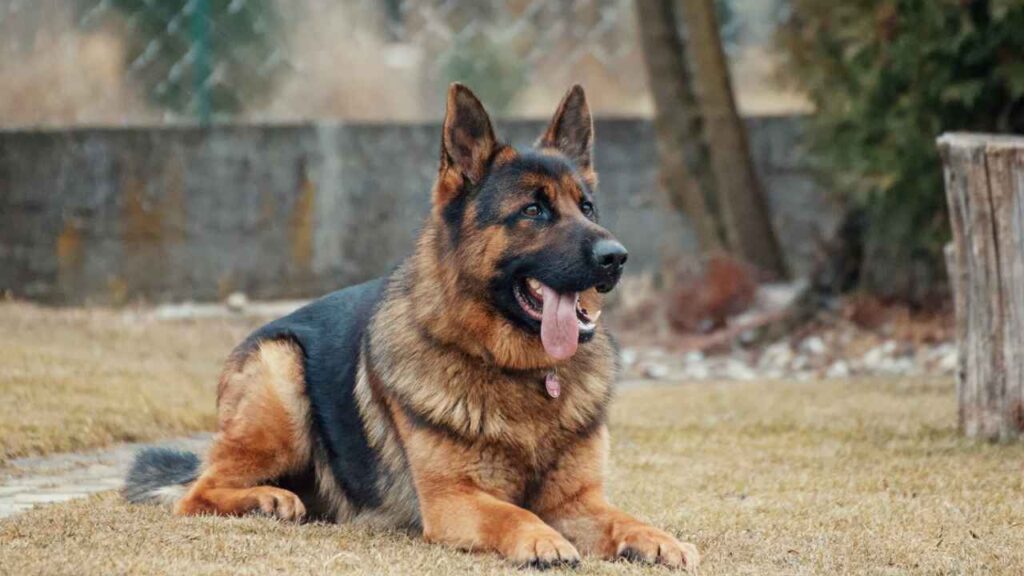
German Shepherds aren’t protective because they’re territorial—they’re protective because they’re trained to assess threats and act with purpose. Their lineage is rooted in structured utility, where obedience training sharpens their decision-making under command, not emotion.
Why law enforcement trusts them
They’re one of the few breeds consistently chosen as police dogs, not just for their stamina, but for their reliable response under high-adrenaline scenarios.
Bite strength isn’t what earns them the role—it’s their ability to disengage the moment they’re called off. That kind of control isn’t instinct. It’s bred and trained for public safety.
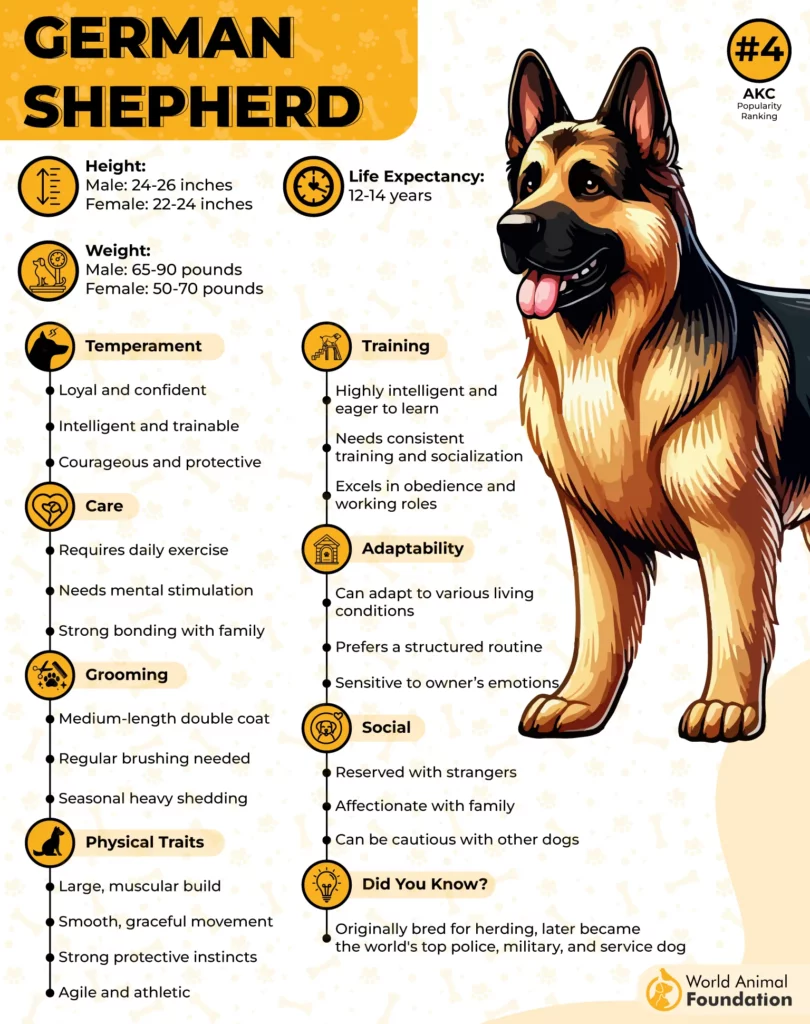
Built for dual roles—defense and sensitivity
Despite their power and drive, they’re also widely used as therapy dogs for trauma patients, war veterans, and those with PTSD, as per K9s for Warriors. It’s their situational awareness that allows them to shift between vigilance and comfort, reading the room without needing a cue.
Not just any guard dog
When choosing the right protection dog, handlers often prioritize this breed for its predictability. It’s not that German Shepherds are fearless—it’s that their courage is measured. They protect because they’re conditioned to, not because they’re reactive.
3. Doberman Pinscher
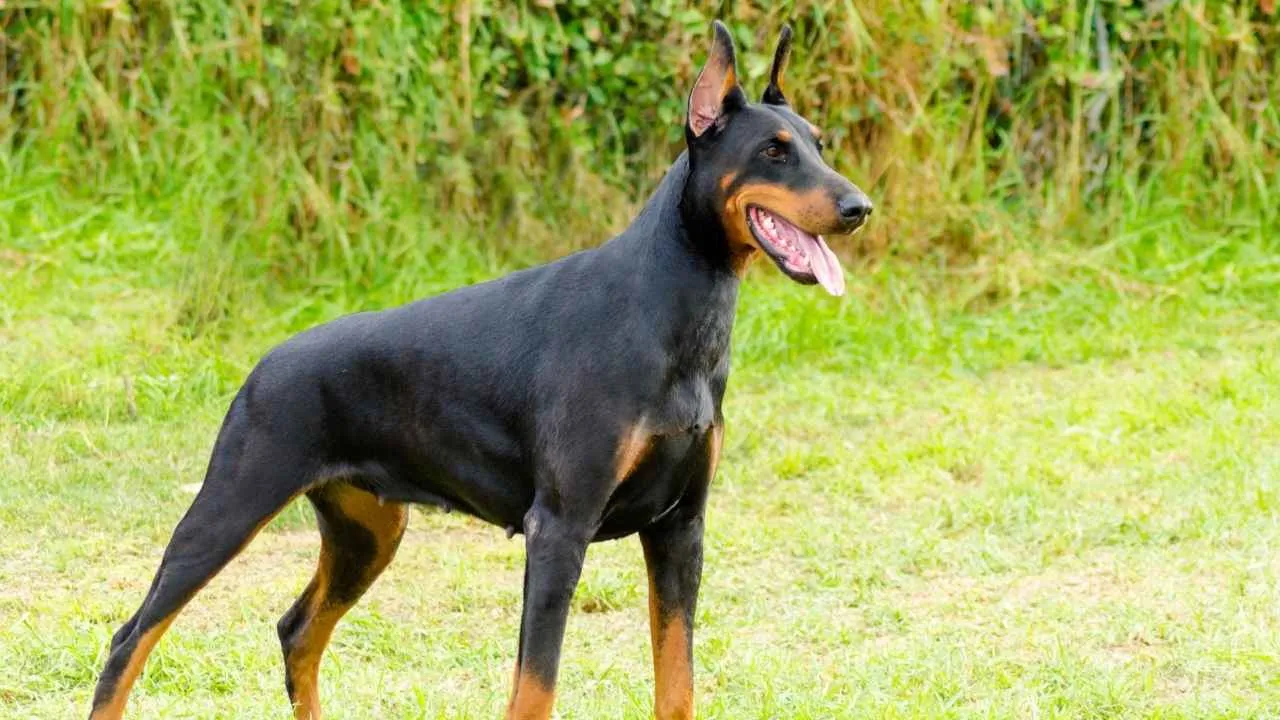
Dobermans weren’t just bred for strength—they were engineered for decision-making in real-time. Their origin traces back to tax collectors in 19th-century Germany who needed a dog that could follow commands, handle confrontation, and reset on cue.
That foundation still guides their suitability for service dog work today, especially in security and military settings.
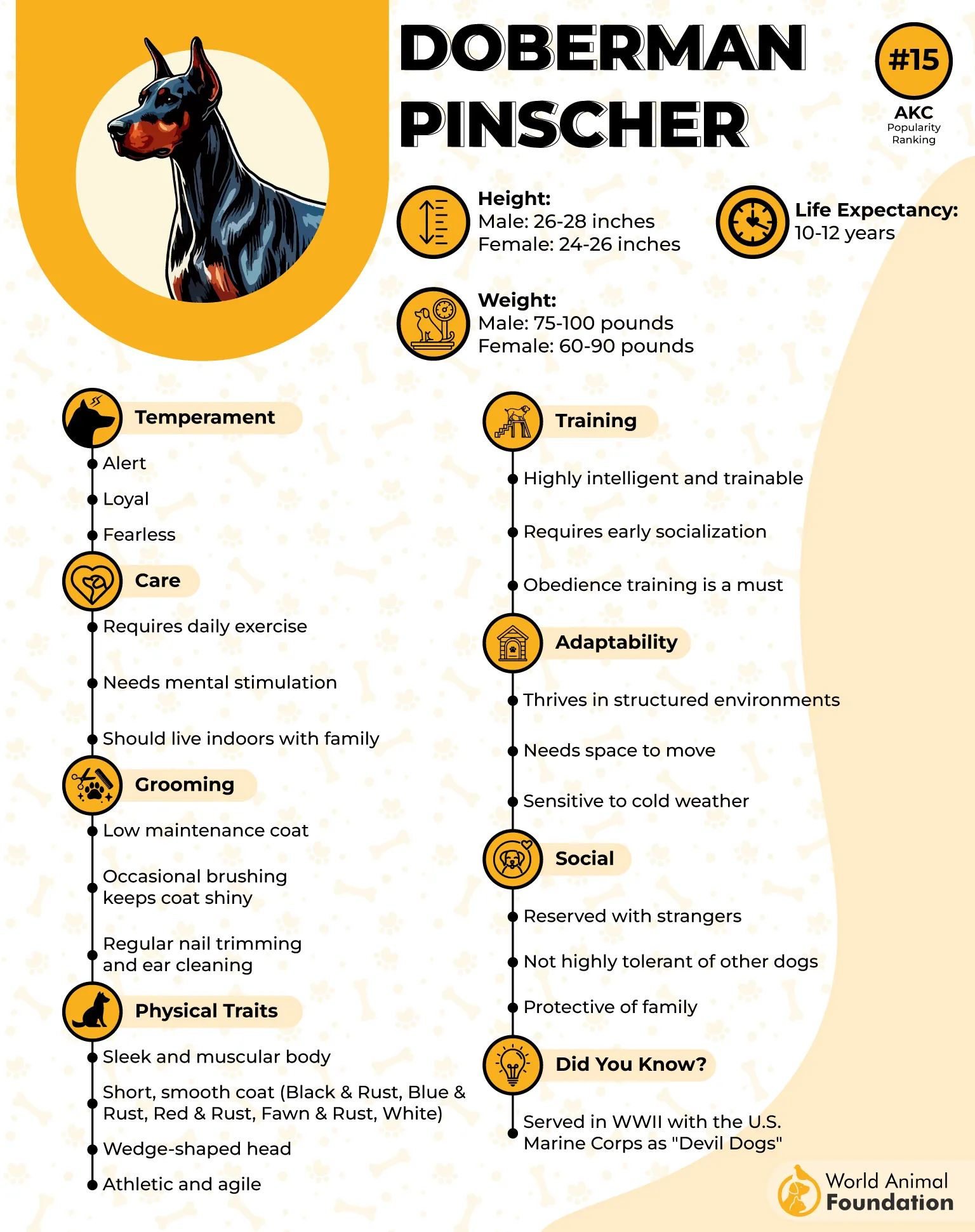
Their instincts are not a myth—they’re measured
Dobermans rank among the best protection dogs, not because they’re intimidating, but because their instincts are so finely tuned.
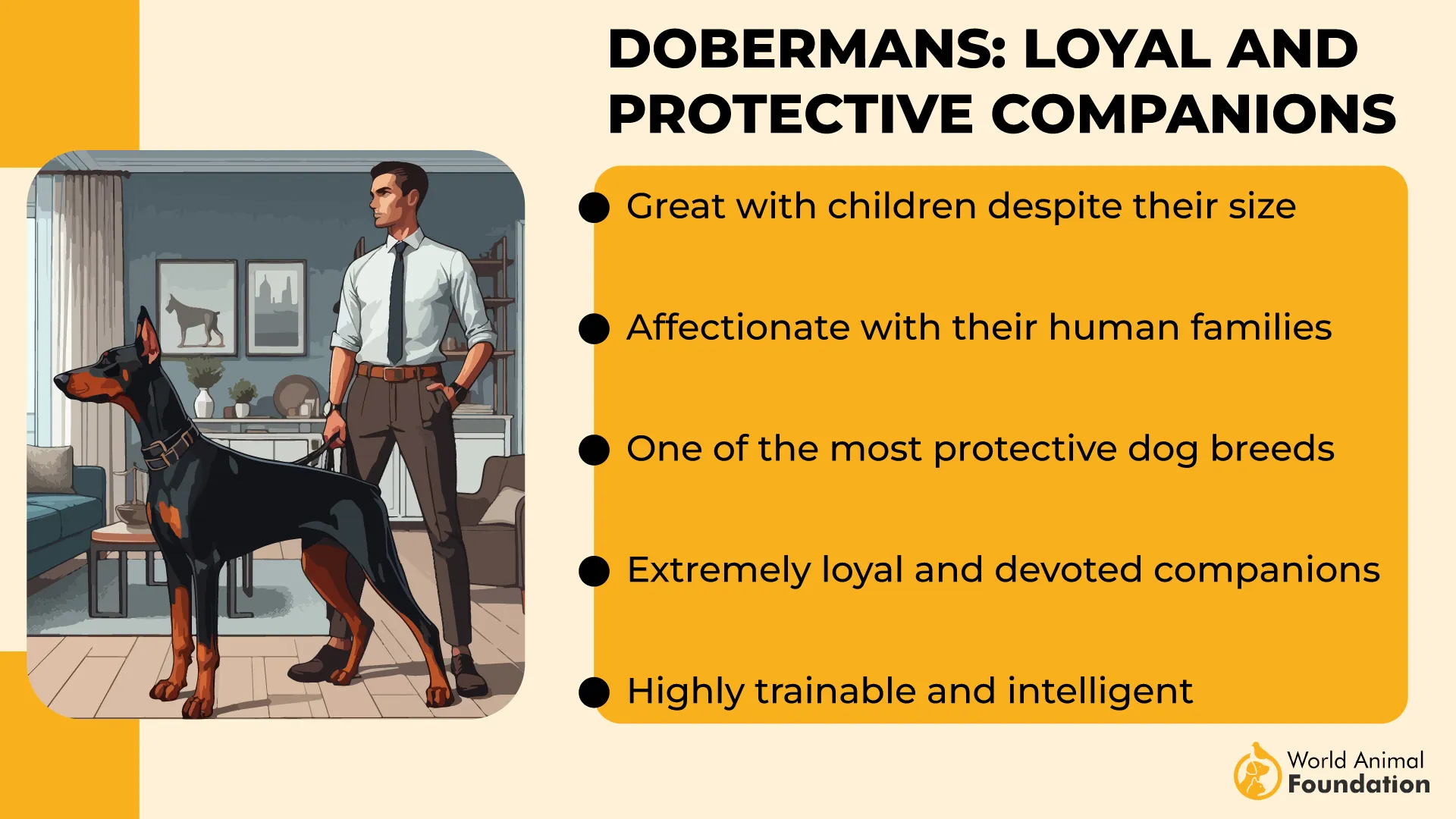
They naturally scan for patterns, assess threat levels, and don’t escalate without direction. That makes them assets in high-pressure environments where anticipation matters more than aggression.
Not for beginners, and never for show
In the dog world, Dobermans carry a reputation that’s often misunderstood. They’re not aggressive by default—they’re intense, focused, and require experienced handlers who understand drive-based breeds. Their reactions are fast because their training demands it, not because they lack control.
When structure meets loyalty
For families with the right lifestyle and experience, Dobermans can transition into a reliable family pet. But they thrive in roles that challenge their intelligence and fulfill their instinct to protect with purpose.
4. Bullmastiff

Bullmastiffs were originally developed in 19th-century England by gamekeepers who needed a dog that could track and pin poachers without biting or barking, as highlighted by the American Bullmastiff Association.
This history built a breed that’s quiet, calculated, and deeply loyal—ideal for home security roles where deterrence is paired with discipline.
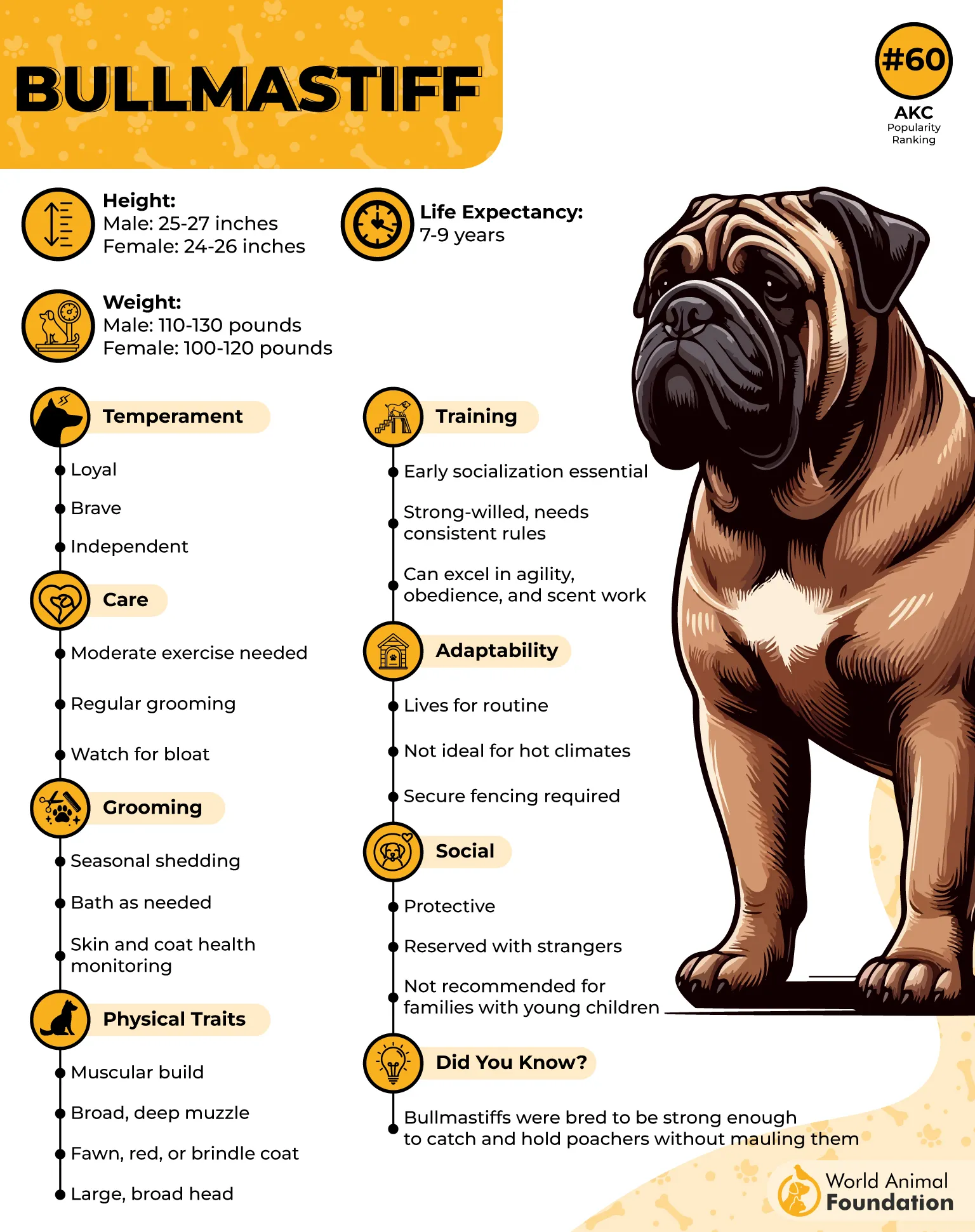
Observation over aggression
What makes Bullmastiffs stand out is not just their build, but their mindset. They’re highly intelligent, but not impulsive. They prefer to observe first, act second—especially when strangers are involved. They’re not prone to overreacting, but when a threat is real, they move with force and control.
Not social butterflies, but deeply loyal
Bullmastiffs don’t crave constant contact with humans, but they form strong bonds with those they trust. With proper structure and early training, many live harmoniously with kids, though their sheer size means boundaries must be clearly taught from both ends.
A presence that changes the energy of a space
They’re the kind of breed that doesn’t need to prove anything. One look is often enough. In a world where overreaction is common, the Bullmastiff protects through presence, patience, and pressure applied only when it truly matters.
5. Giant Schnauzer
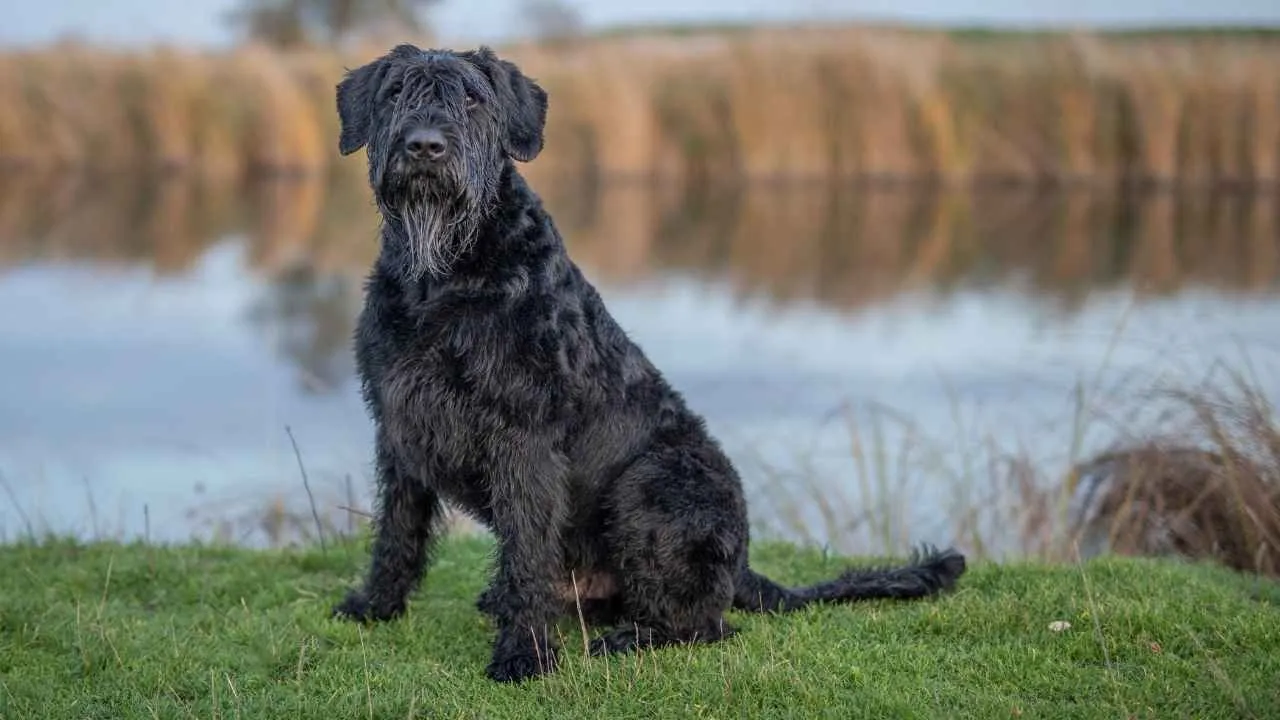
Unlike their smaller cousins, the Giant Schnauzer was designed for serious jobs. Originally bred to drive cattle in the Bavarian Alps, they later proved themselves as working dogs for European police and military. Their high-drive nature and sharp instincts make them one of the few breeds truly suited for demanding, full-time protection roles.
Not just big, imposing, and precise
They’re not merely about massive size; it’s how they carry it. Every movement of a Giant Schnauzer signals purpose. This is a breed that thrives on a command structure. Without strong, confident owners, they’ll fill the leadership vacuum themselves—and that rarely ends well.
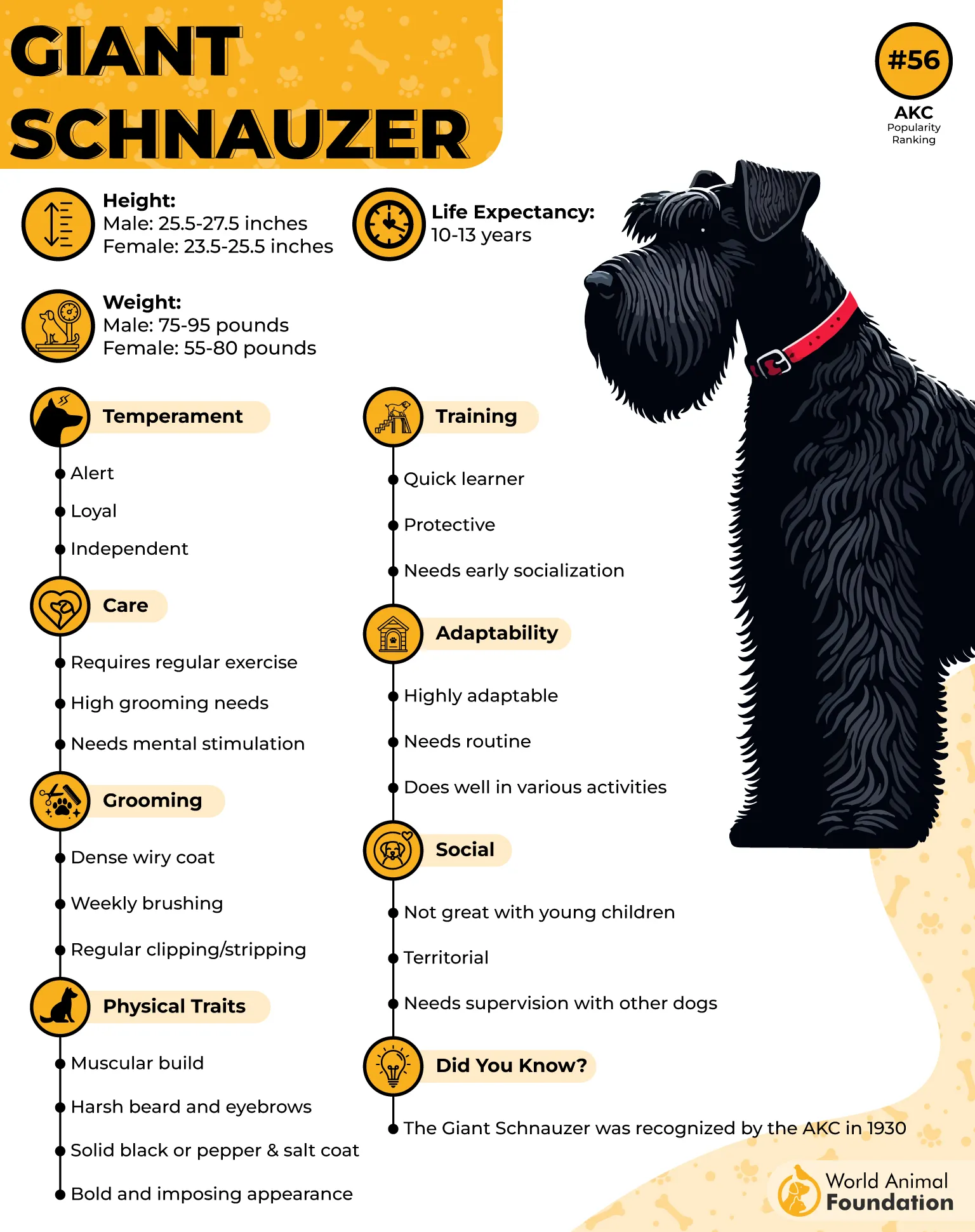
Unmatched alertness with controlled loyalty
Their natural suspicion of strangers isn’t based on fear or nervousness; it’s a measured instinct built from generations of sentinel behavior. But when raised correctly, they transition beautifully into loving pets, capable of switching between protection mode and family time, though never quite off-duty.
For people who want presence and purpose
They’re not casual companions. This breed requires an owner who values precision, direction, and challenge. That commitment transforms them from intense to incredible.
6. Rhodesian Ridgeback
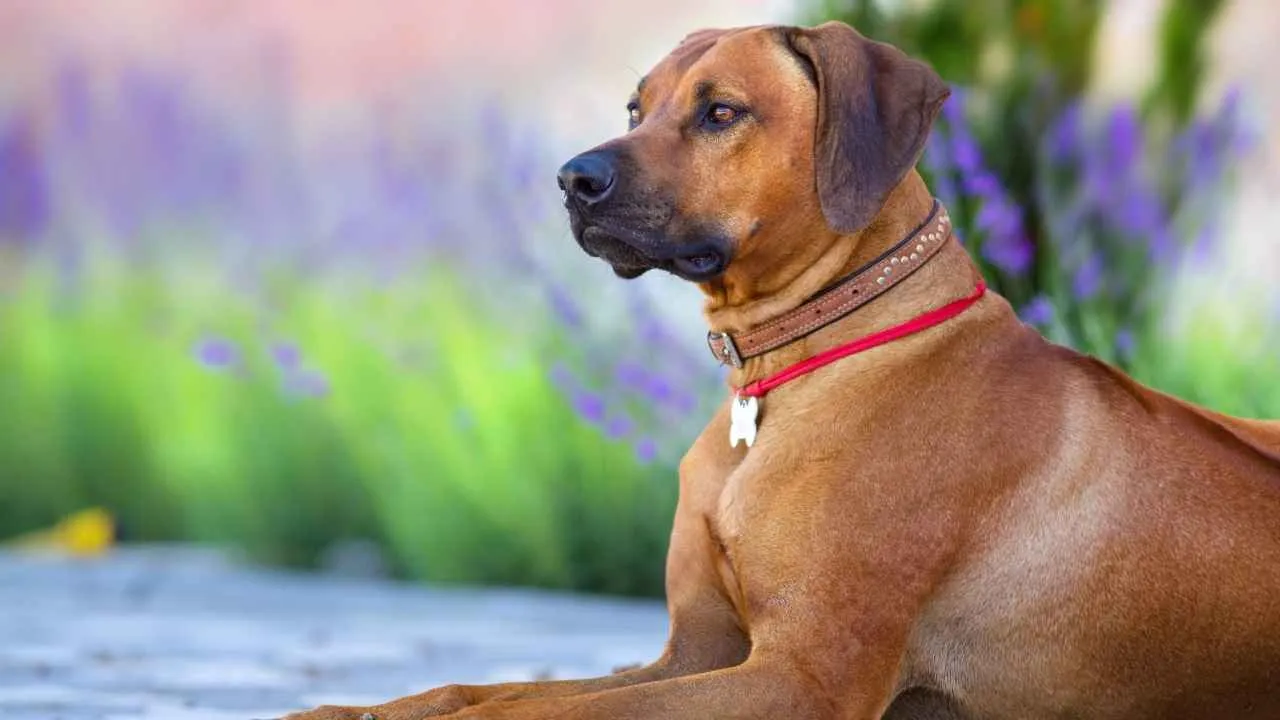
Originally developed in Southern Africa, the Rhodesian Ridgeback was bred to track and hold large animals like lions—not by attacking, but by outsmarting and outlasting them.
That heritage shows in their temperament: fiercely independent, highly observant, and not ones to bark without reason. In fact, many consider them among the best guard dogs precisely because they assess situations before acting.
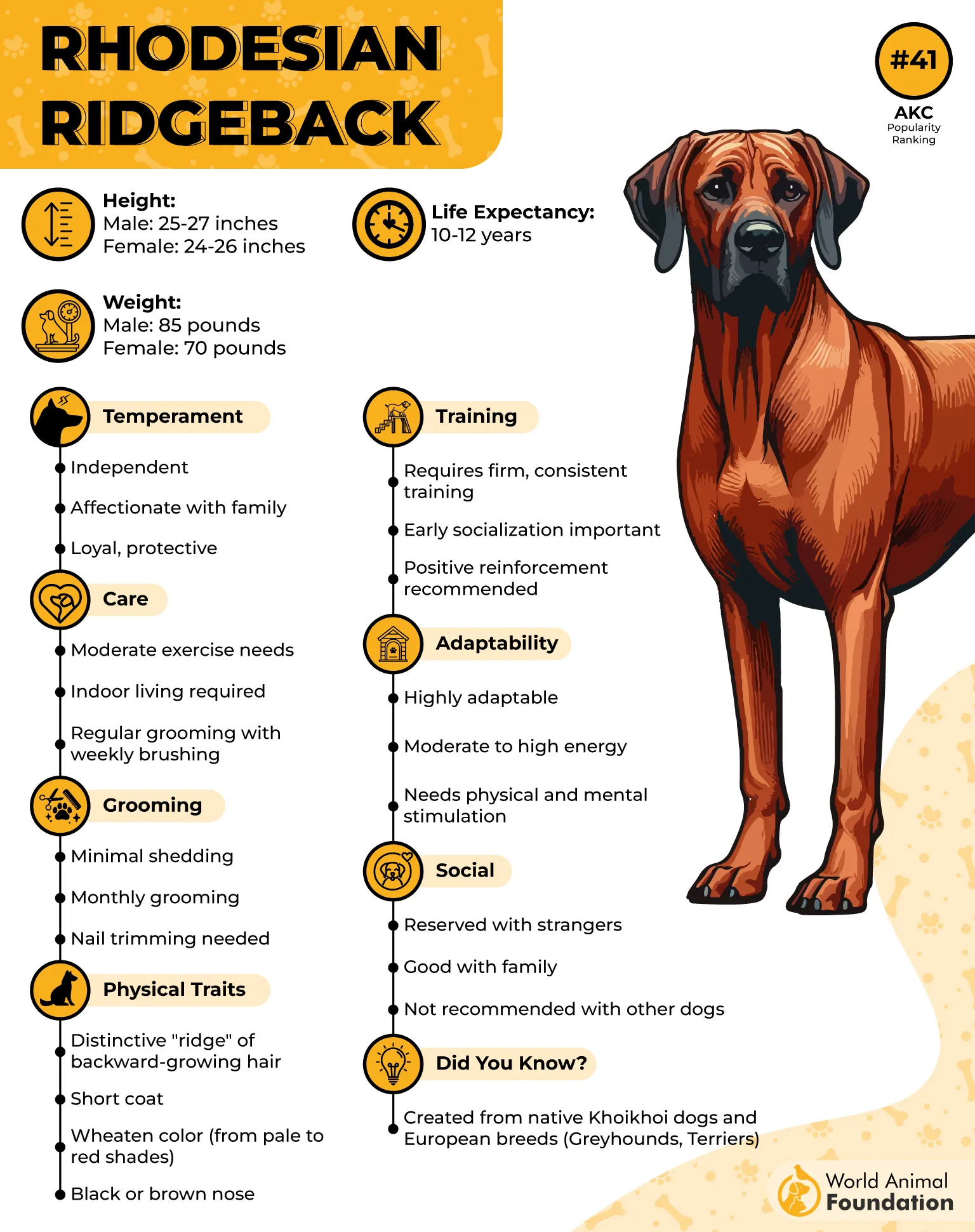
Not your typical service breed, but effective in the right role
Though not as commonly seen in traditional police work, Ridgebacks possess exactly the traits that make long-range patrol or private estate work ideal: endurance, restraint, and loyalty paired with a strong territorial instinct. Their intelligence isn’t always about compliance—it’s about understanding intent.
Loyal, clean, and physically tough
Despite their size and strength, Ridgebacks are surprisingly low-maintenance. Their short coat sheds minimally, and they’re naturally clean dogs.
They’re also less prone to separation anxiety compared to other protective breeds, which means they’re content keeping watch without being constantly underfoot.
Not for everyone—exactly what some need
A Ridgeback doesn’t chase attention. They respect strength, not affection. But in the right hands, they offer one of the most composed, reliable, and intuitive defense instincts in the canine world.
7. Great Dane
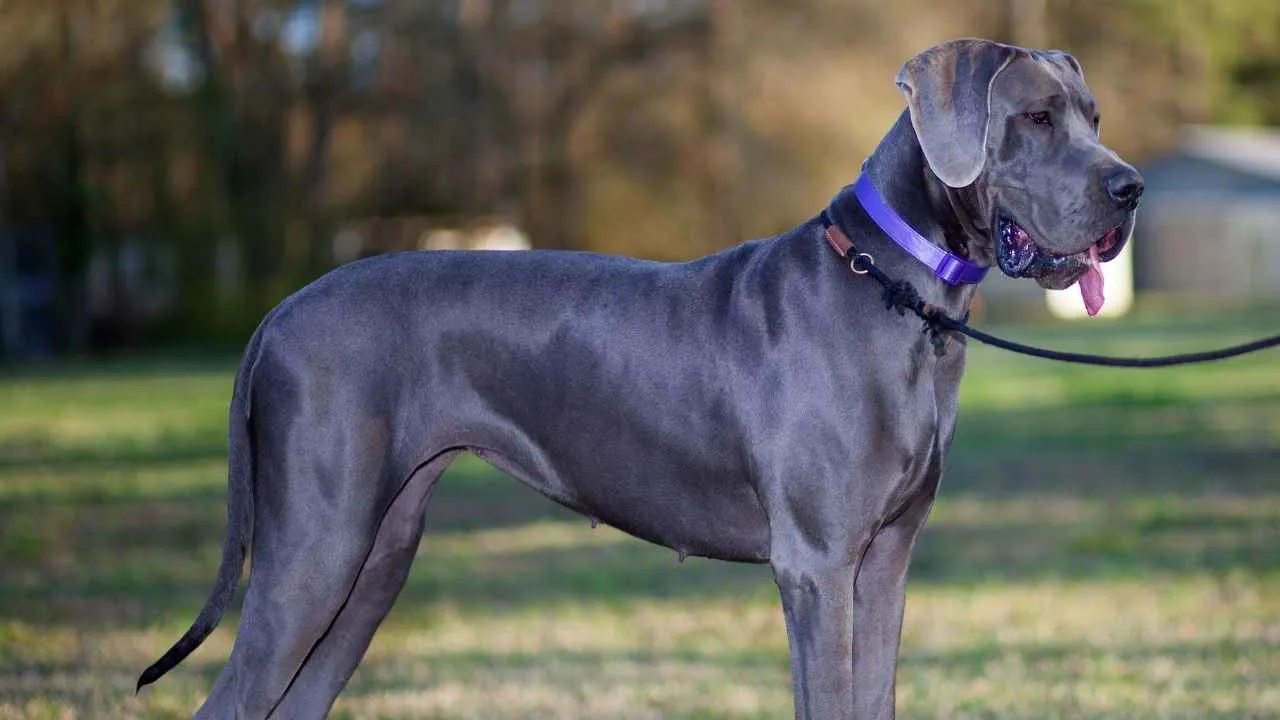
Great Danes don’t need to growl to make a point—their sheer size does most of the talking. Standing up to 32 inches tall at the shoulder, they present an imposing silhouette that naturally deters intruders.
But what often surprises people is their gentle, people-focused temperament. This duality—confidence without aggression—makes them ideal for roles where presence matters as much as action.
Surveillance over confrontation
While not typically aggressive, Great Danes are excellent at monitoring their surroundings, as per Hills Pet. They’re alert, highly observant, and naturally protective of their home environment.
Their response isn’t explosive; it’s calculated. They’ll position themselves between their person and a perceived threat, relying on body language and size rather than barking or biting.
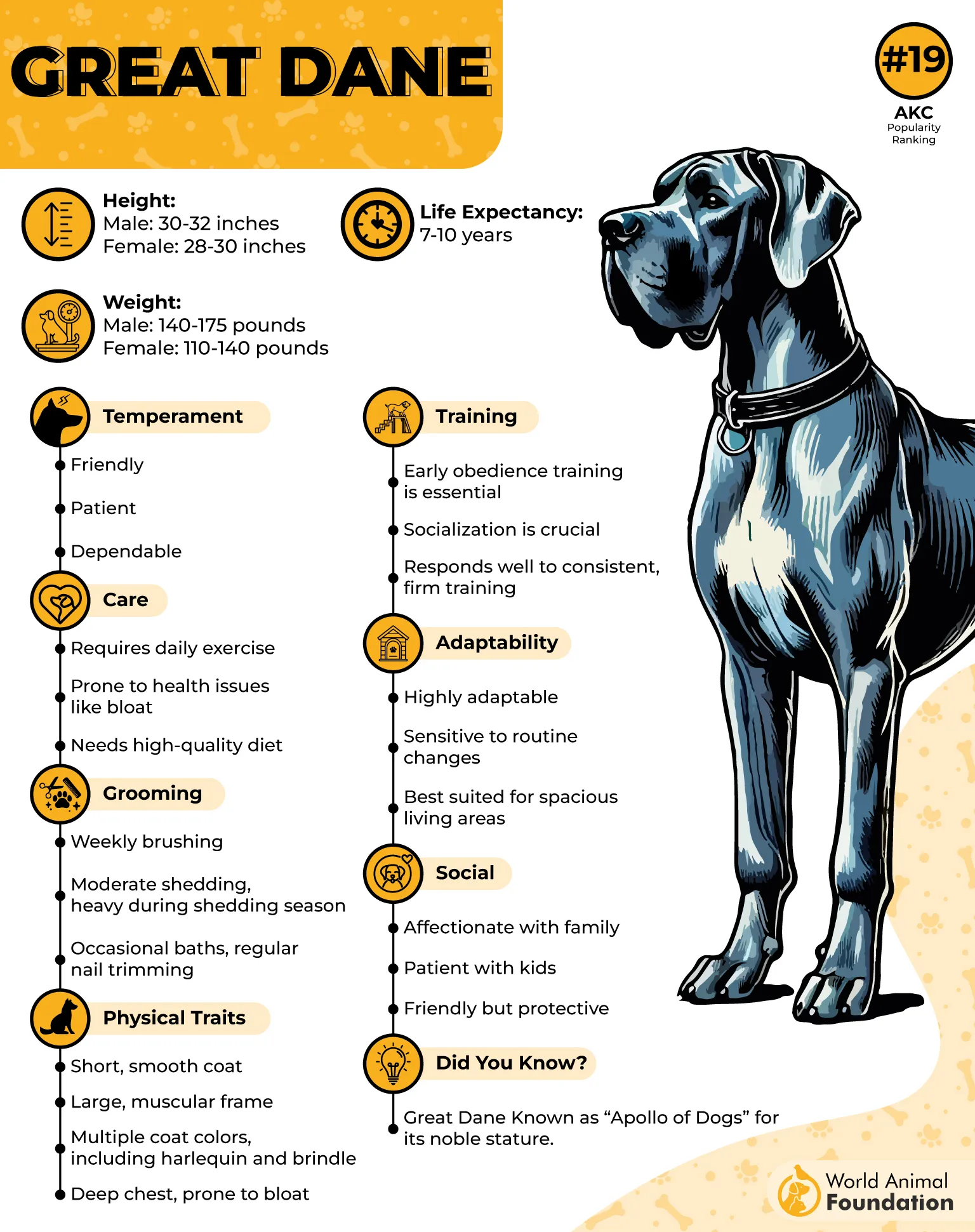
Training-dependent reliability
Due to their strength and size, early obedience training isn’t optional—it’s essential. When properly socialized and trained, Danes exhibit exceptional patience and steadiness, especially under pressure.
This makes them uniquely qualified for service in settings where crowd control or emotional grounding is needed without the intensity of high-alert breeds.
Protective but not impulsive
What sets them apart in protective service is their balanced temperament. A Great Dane won’t overreact or get caught up in stimulus; it processes.
Its instincts lean more toward guardian than aggressor—a mindset that, when backed by consistent leadership, makes them a commanding yet level-headed protector.
Conclusion
Whether it’s a gentle giant or a high-drive sentinel, these breeds weren’t just trained—they were born with an instinct to guard. Their roles go beyond barking at the door. These are dogs that assess threats, read your body language, and adapt in real time. That’s not a coincidence—it’s evolution paired with training.
Some may not look the part—small dogs and even certain mixed breeds can surprise you with sharp observation and bold loyalty. But true protective instincts come from a mindset, not just muscle.
So, if you’re considering a dog for personal protection, think beyond stereotypes. The best protectors are often the most intuitive, naturally alert, and deeply bonded to their people. They don’t just scare intruders. They give you priceless peace of mind.


